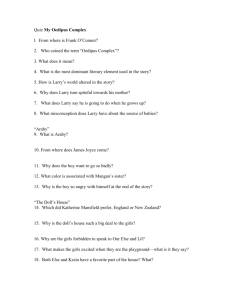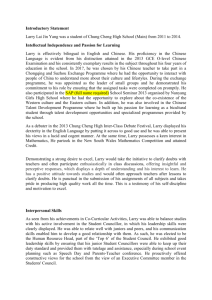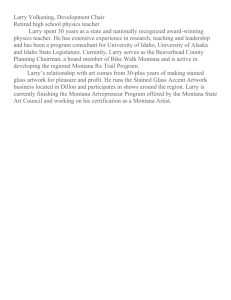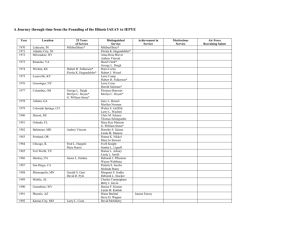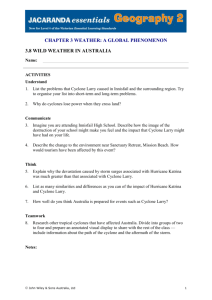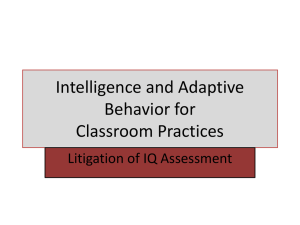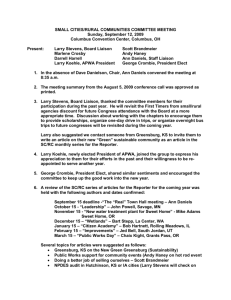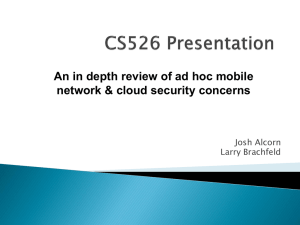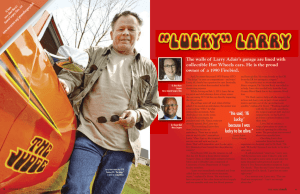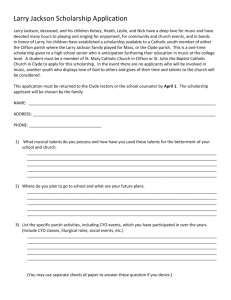Larry Needham and the Partition Ratios
advertisement
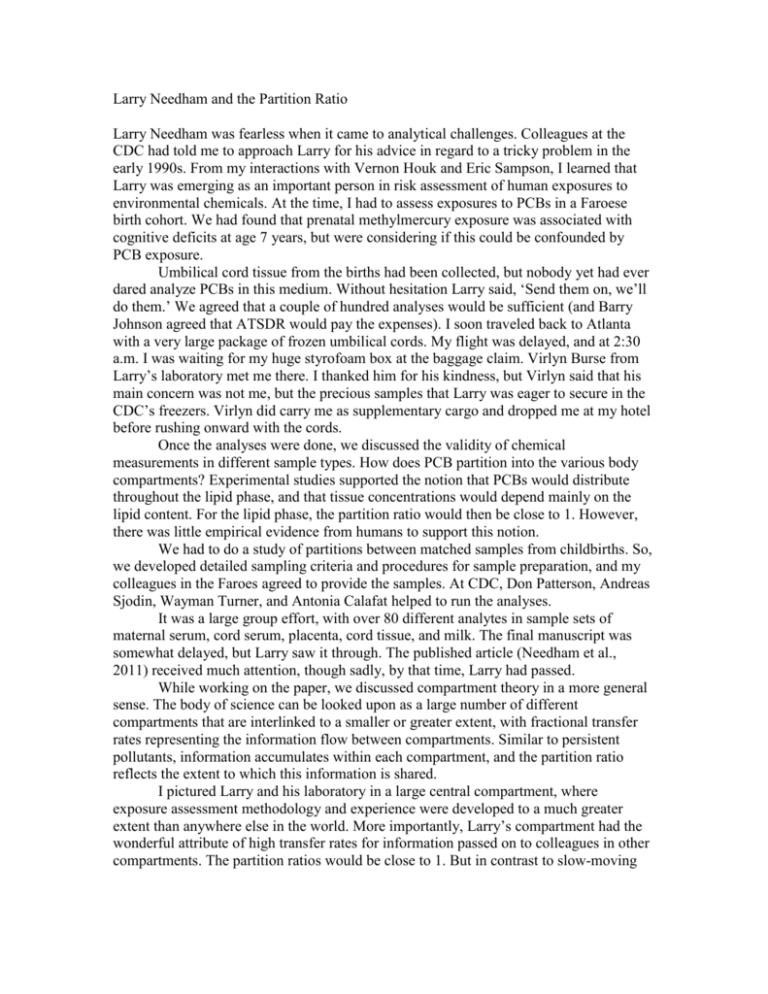
Larry Needham and the Partition Ratio Larry Needham was fearless when it came to analytical challenges. Colleagues at the CDC had told me to approach Larry for his advice in regard to a tricky problem in the early 1990s. From my interactions with Vernon Houk and Eric Sampson, I learned that Larry was emerging as an important person in risk assessment of human exposures to environmental chemicals. At the time, I had to assess exposures to PCBs in a Faroese birth cohort. We had found that prenatal methylmercury exposure was associated with cognitive deficits at age 7 years, but were considering if this could be confounded by PCB exposure. Umbilical cord tissue from the births had been collected, but nobody yet had ever dared analyze PCBs in this medium. Without hesitation Larry said, ‘Send them on, we’ll do them.’ We agreed that a couple of hundred analyses would be sufficient (and Barry Johnson agreed that ATSDR would pay the expenses). I soon traveled back to Atlanta with a very large package of frozen umbilical cords. My flight was delayed, and at 2:30 a.m. I was waiting for my huge styrofoam box at the baggage claim. Virlyn Burse from Larry’s laboratory met me there. I thanked him for his kindness, but Virlyn said that his main concern was not me, but the precious samples that Larry was eager to secure in the CDC’s freezers. Virlyn did carry me as supplementary cargo and dropped me at my hotel before rushing onward with the cords. Once the analyses were done, we discussed the validity of chemical measurements in different sample types. How does PCB partition into the various body compartments? Experimental studies supported the notion that PCBs would distribute throughout the lipid phase, and that tissue concentrations would depend mainly on the lipid content. For the lipid phase, the partition ratio would then be close to 1. However, there was little empirical evidence from humans to support this notion. We had to do a study of partitions between matched samples from childbirths. So, we developed detailed sampling criteria and procedures for sample preparation, and my colleagues in the Faroes agreed to provide the samples. At CDC, Don Patterson, Andreas Sjodin, Wayman Turner, and Antonia Calafat helped to run the analyses. It was a large group effort, with over 80 different analytes in sample sets of maternal serum, cord serum, placenta, cord tissue, and milk. The final manuscript was somewhat delayed, but Larry saw it through. The published article (Needham et al., 2011) received much attention, though sadly, by that time, Larry had passed. While working on the paper, we discussed compartment theory in a more general sense. The body of science can be looked upon as a large number of different compartments that are interlinked to a smaller or greater extent, with fractional transfer rates representing the information flow between compartments. Similar to persistent pollutants, information accumulates within each compartment, and the partition ratio reflects the extent to which this information is shared. I pictured Larry and his laboratory in a large central compartment, where exposure assessment methodology and experience were developed to a much greater extent than anywhere else in the world. More importantly, Larry’s compartment had the wonderful attribute of high transfer rates for information passed on to colleagues in other compartments. The partition ratios would be close to 1. But in contrast to slow-moving PCBs, the data and advice were transferred from Larry and his colleagues rapidly and generously, independent of media and affinities. Larry was a giant in exposure assessment research. From the point of view of compartment theory, Larry’s legacy is magnified by his enthusiasm for collaboration and his willingness to share. Larry had a catalytic effect on environmental health research: In science, a partition ratio close to 1 makes a world of a difference. Reference Needham LL, Grandjean P, Heinzow B, Jørgensen PJ, Nielsen F, Patterson DG Jr, Sjödin A, Turner WE, Weihe P. Partition of environmental chemicals between maternal and fetal blood and tissues. Environ Sci Technol 2011; 45: 1121-6. Philippe Grandjean Department of Environmental Medicine, University of Southern Denmark, 5000 Odense, Denmark Department of Environmental Health, Harvard School of Public Health, Boston, MA 02215, USA
